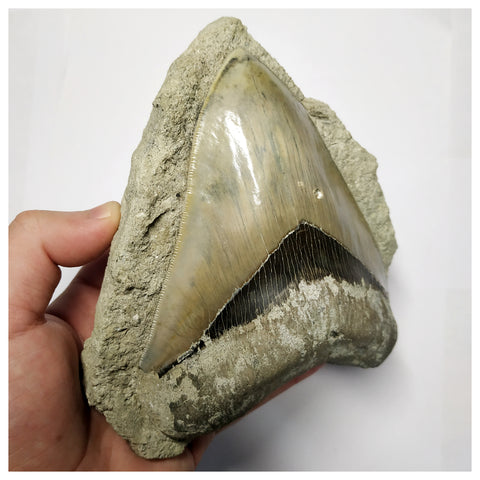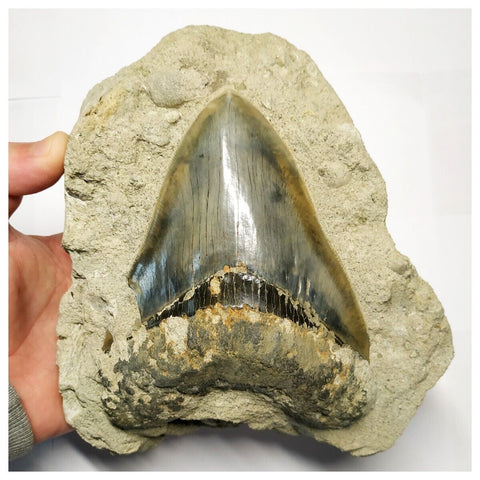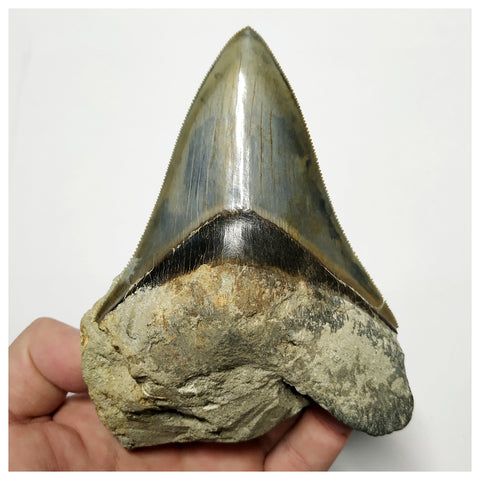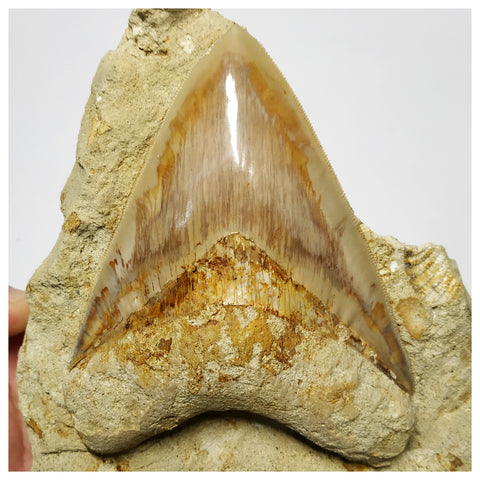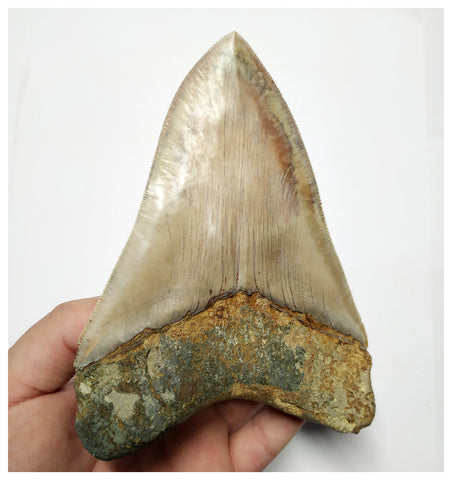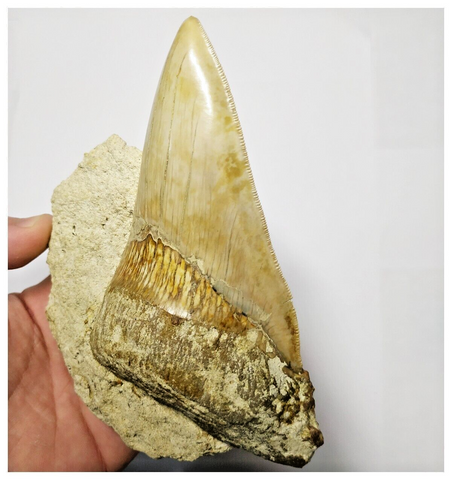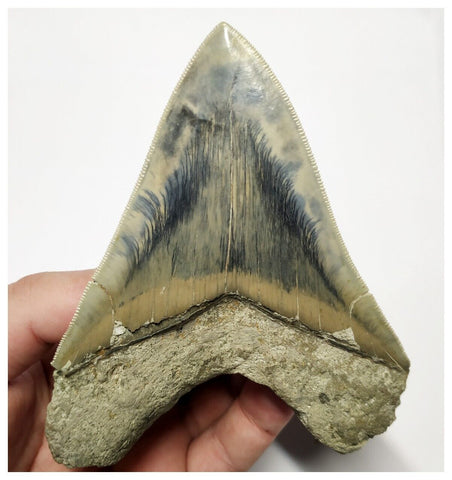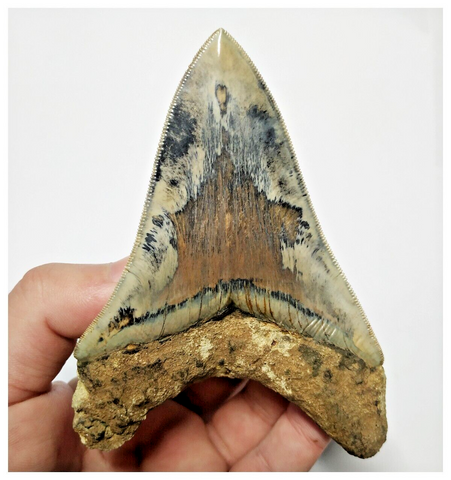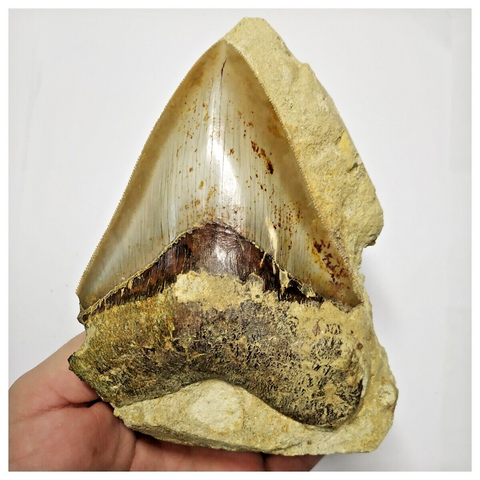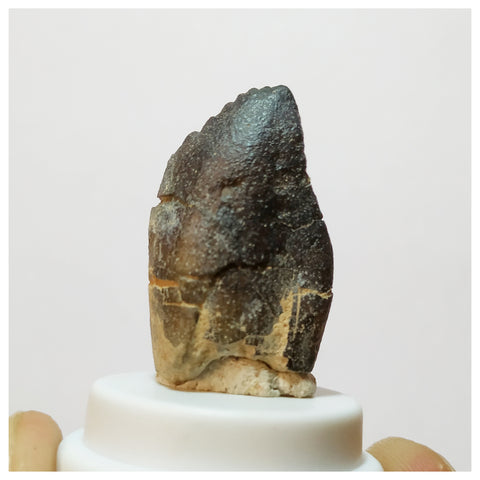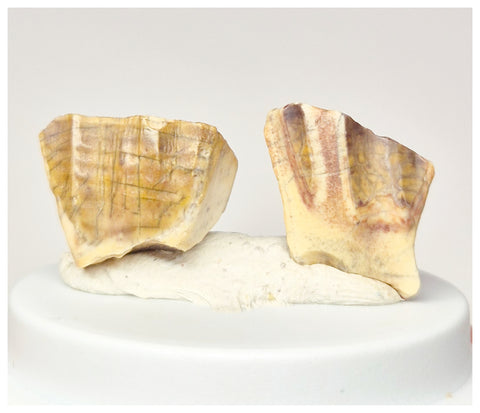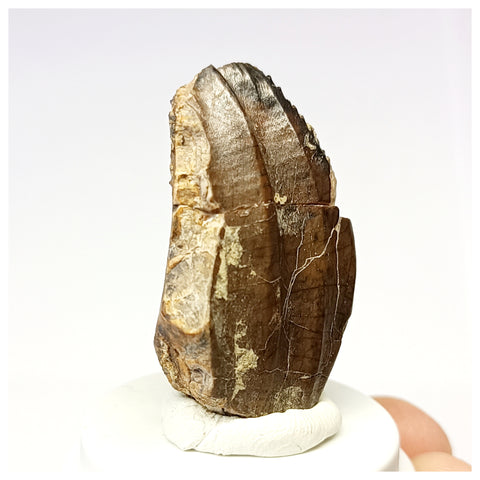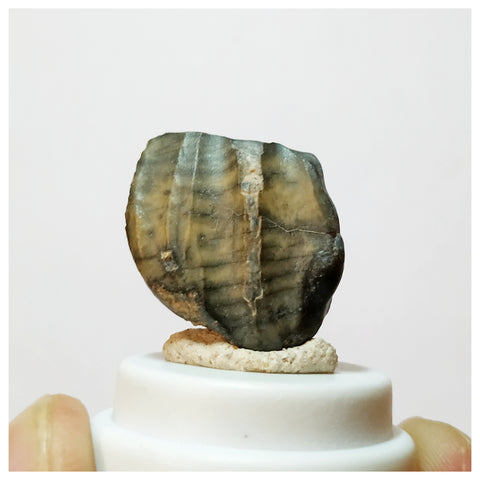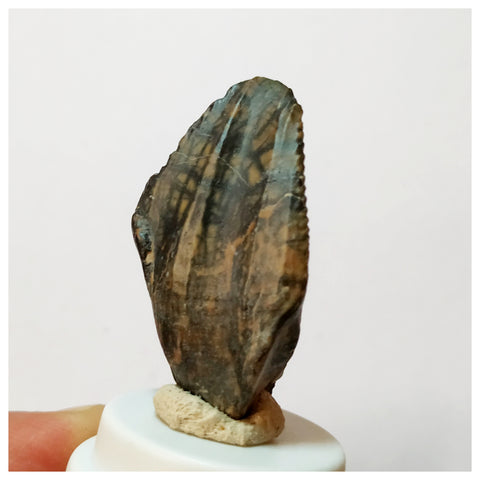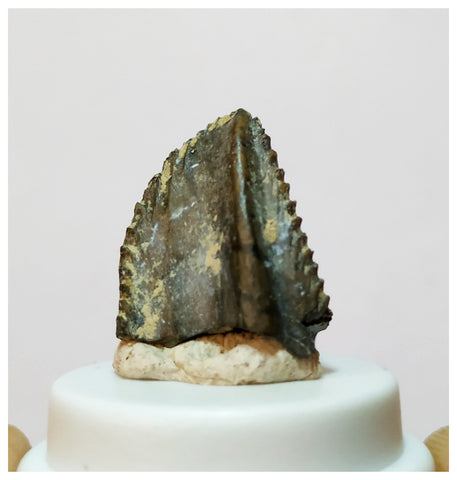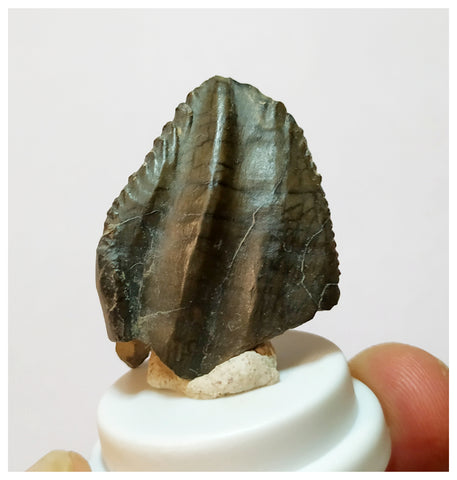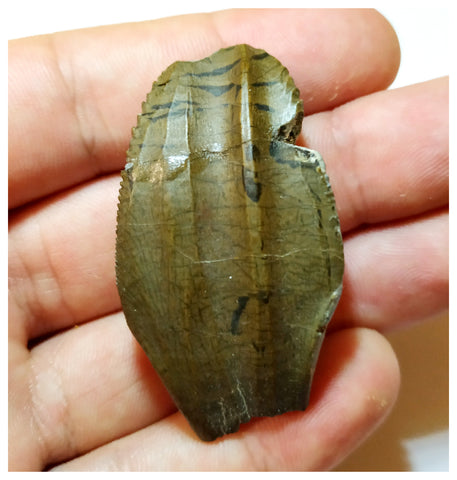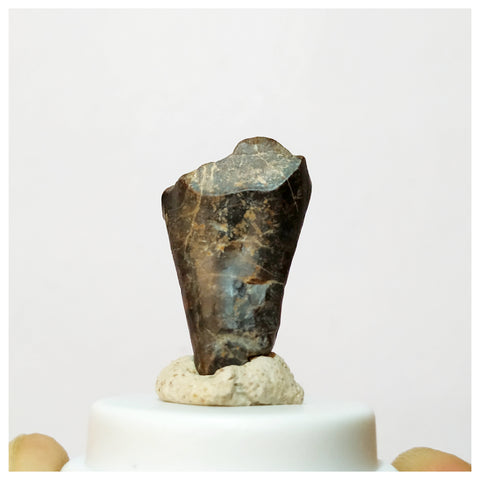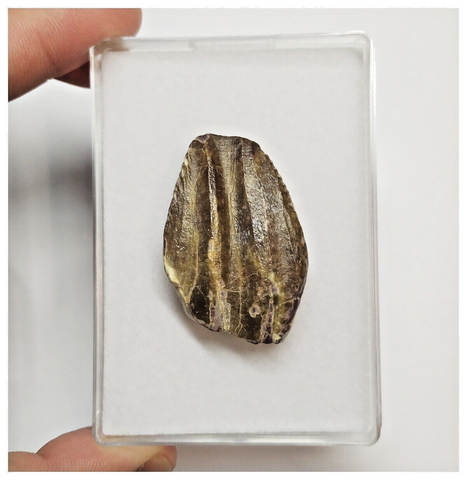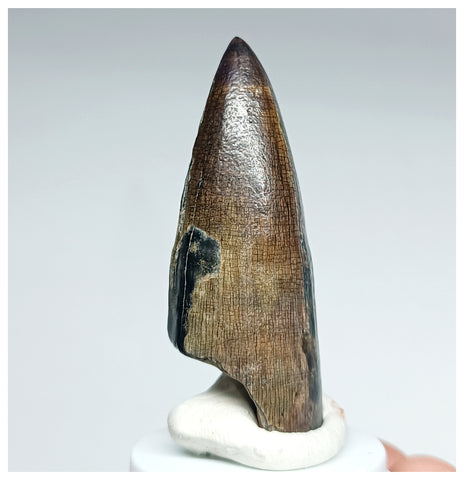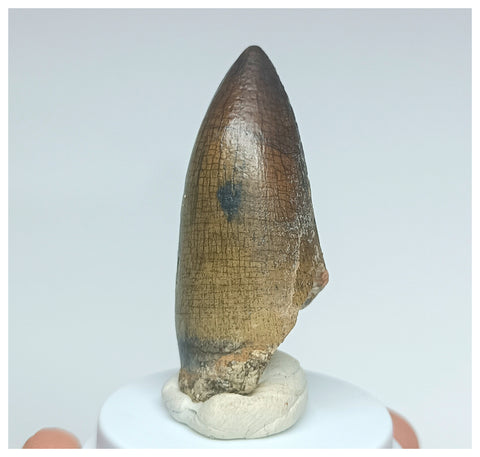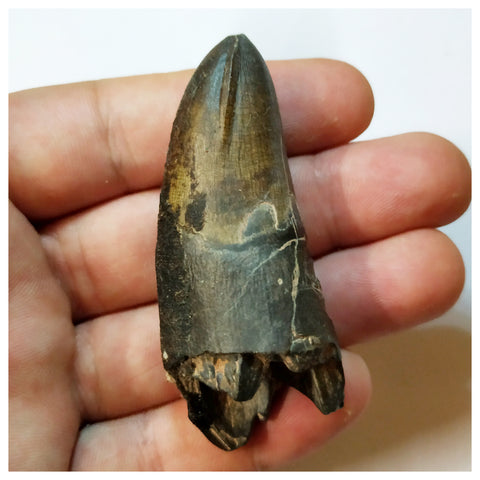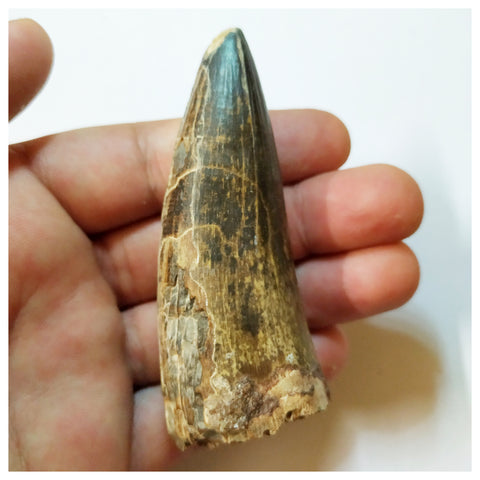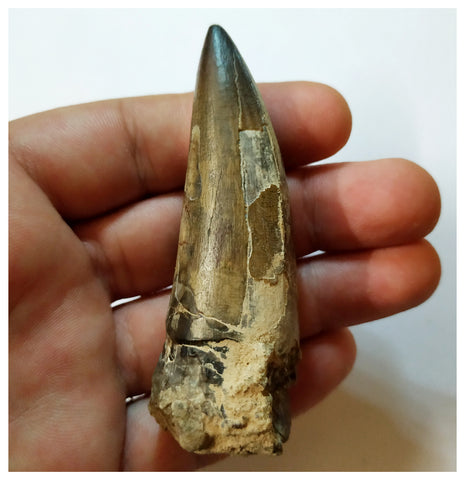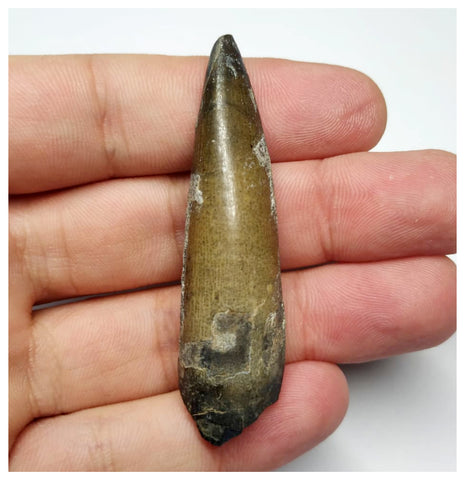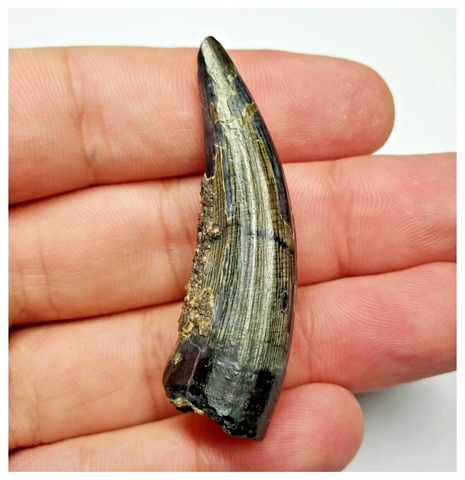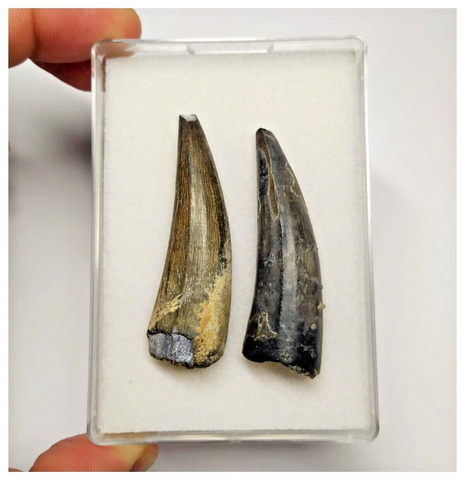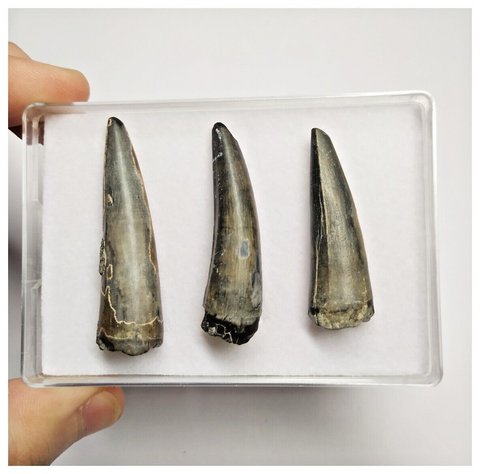Impressive natural association of these two teeth of large marine reptiles that lived together; The mosasaur and the Elasmosaur.
In the international market is very common to find Mosasaurus rests coming from the phosphate quarries of the Upper Cretaceous of the Ouled Abdoun Basin (Morocco).
This quarries have been exploited since the beginning of the past century. Many sellers that sell this fossils do not make a good precise taxonomic identification work.
In these sites there are numerous different species of Mosasaurus described in the enormous assemblage of giant marine reptiles that reigned the seas during the Cretaceous.
The main rich levels in these paleontological taxons are in the deeper stratigraphic levels of the sedimentarian filling of the Ouled Abdoun Basin. The age of these correspond to the Maastrichtian stage, 66 million years ago.
Most of the research carried out on these marine reptiles from Morocco have been performed by French researchers.
Next we list the different Mosasaur species which have been recognised in the phosphate rocks in North Africa:
-Halisaurus aramborgi (Bardet et al., 2005)
-Halisaurus walkeri (Lingham-Solier, 1998)
-Prognathodon sp (Dollo, 1889)
-Prognathodon anceps (Leiodon anceps)
-Prognathodon solvay (Dollo, 1889)
-Prognathodon currii (Christiansen & Bonde, 2002)
-Eremiasaurus heterodontus (LeBlanc et al., 2012)
-Mosasaurus beaugei (Arambourg, 1952)
-Mosasaurus hoffmanni (Mantell, 1829)
-Tylosaurus (Marsh, 1872)
-Platecarpus ptychodon (Arambourg, 1954)
-Globidens phosphaticus (Bardet et al., 2005)
-Carinodens belgicus (Bardet et al., 2005)
The Ouled Abdoun Basin (or Khouribga Basin), located in the central sector of Morocco, is an enormous sedimentarian basin represented mostly by a vast filling of phosphate sediments. Apart from having a relevant raw material to be extracted, it has a series of very important paleontological sites in which amazing assemblages from big and small marine vertebrates are present. The basin has a so great continuity in its stratigraphic record that both the Upper Cretaceous as well as the two first epochs of the Paleogene (Paleocene and Eocene) can be studied.
The main assemblage of vertebrate fossils of the Paleogene sector present there is composed by sharks, fish, turtles, marine snakes, rays, crocodiles, other types of reptiles and even marine birds. In the Cretaceous part we can add Mosasaurs, Pterosaurs and Plesiosaurs.
Next you can visit a link with very interesting information about this sedimentarian basin rich in fossil vertebrates: Ouled Abdoun Basin
Prognathodon Anceps
SYSTEMATIC PALEONTOLOGY
Order SQUAMATA Oppell, 1811
Family MOSASAURIDAE Gervais, 1853
Subfamily MOSASAURINAE Williston, 1897
Genus PROGNATHODON Dollo, 1889
All these teeth have subequal buccal and lingual surfaces (with buccal surfaces slightly more inflated), sharp and excavated cutting edges,weakly developed facets and more or less clearly developed beading of the enamel.The last feature makes a significant difference in relation to teeth of the genus Liodon Agassiz,1846(= Leiodon . Owen,1841,non Swainson,1839),which are smooth,including the type material of Leiodon anceps Owen, 1845 from the Upper Campanian Belemnitella mucronata Zone of Essex, England (Lingham−Soliar1993).
The material described by Arambourg (1952) is in need of revision; it may represent a new mosasaurid taxon.
Awaiting this revision, we provisionally denote the Polish and Maastricht specimens as “ Mosasaurus ( Leiodon ) cfr.anceps










